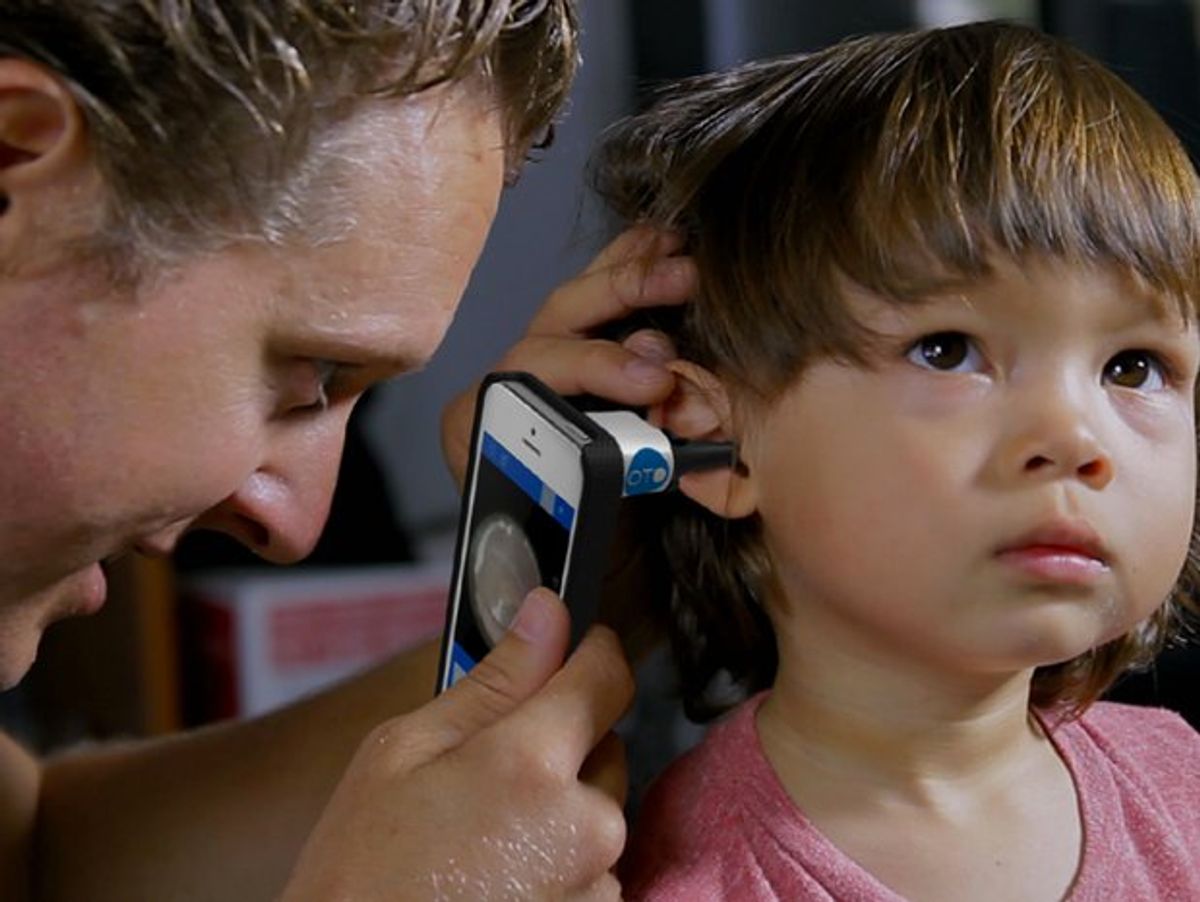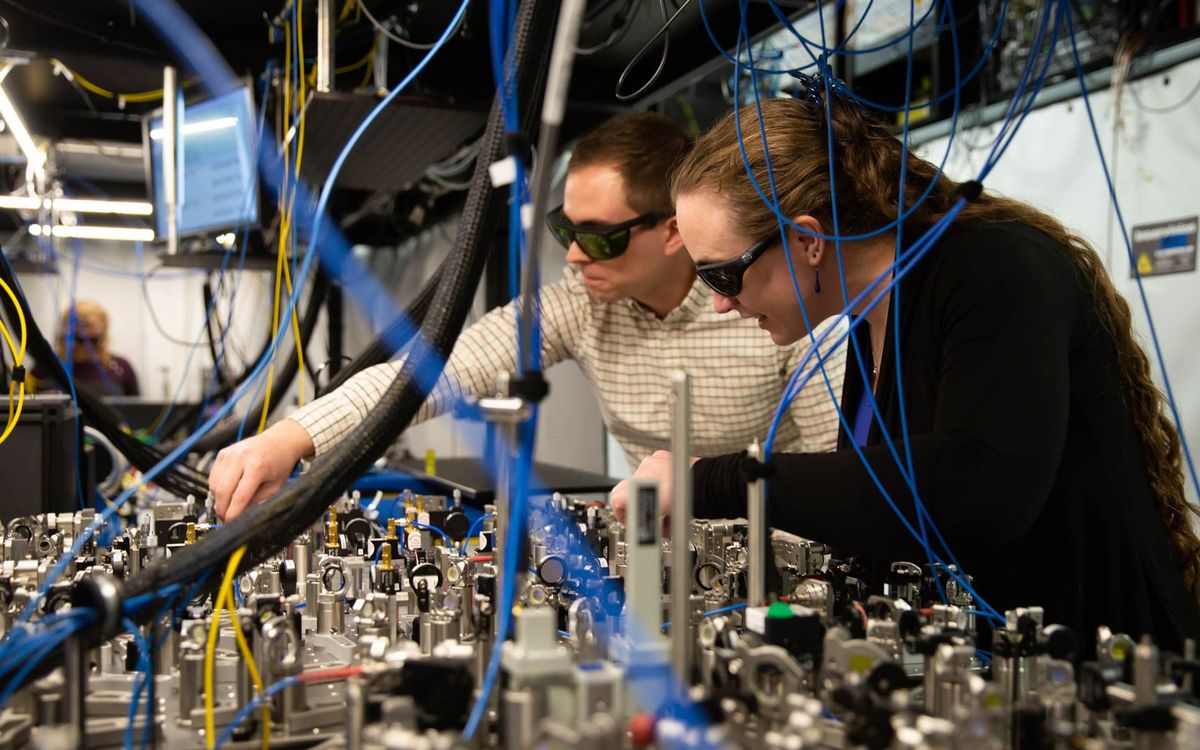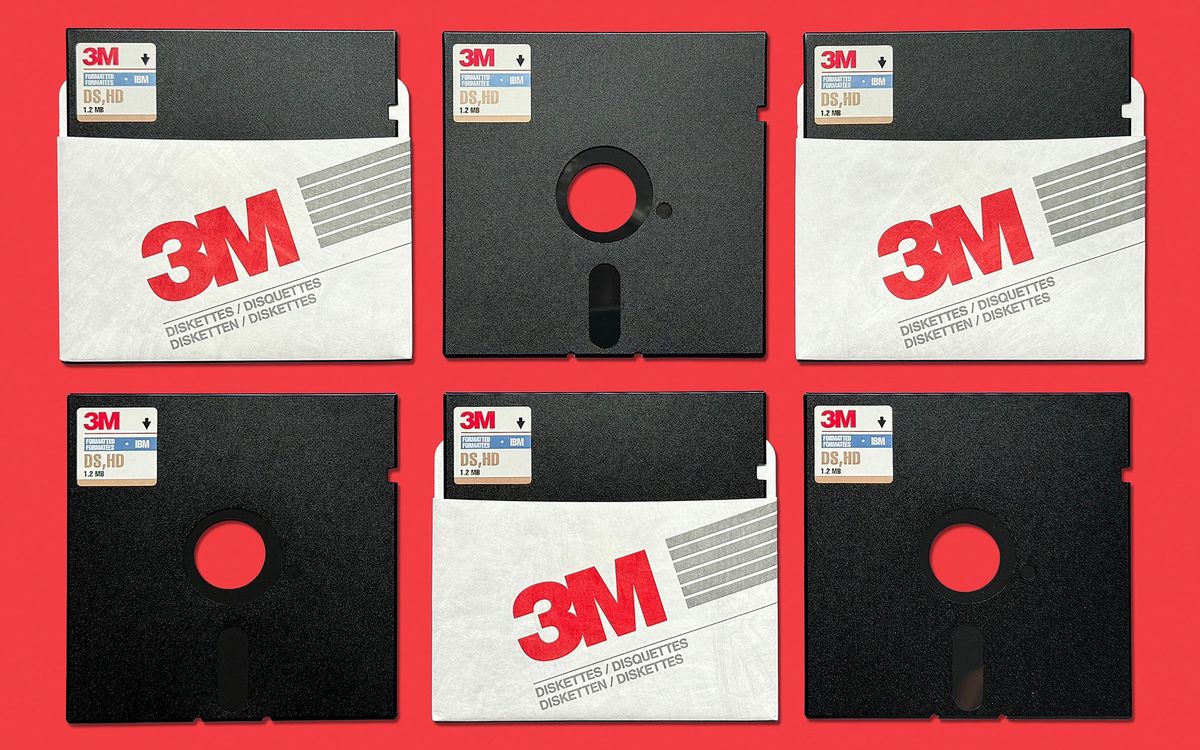One of the most welcome trends in health care is the emergence of consumer gadgets that can help people deal with their medical needs at home, avoiding the agony of doctors’ offices and, even worse, emergency rooms. The newest entry in field is the Cellscope Oto, a clip-on gadget that turns a smartphone into an otoscope, the tool that doctors use to peer into an ear and check out a patient’s eardrum.
Cellscope has just begun selling a pro tool for doctors, but the more interesting development is a consumer version that parents will soon be able to keep in their medicine cabinets, next to their thermometers.
The company just began pre-sales for its at-home version in California, and will roll out the campaign in other states in 2015. The gadget works only with iPhones right now, but the company is working on a version that will work with all smartphones.
As most parents know, ear infections are incredibly common among kids: The NIH says 80 percent of children will have at least one ear infection before age 3, and kids who are prone to these infections may have them again and again. Rather than schlep into the doctor’s office or ER with a screaming kid to get a diagnosis and antibiotic prescription, the Cellscope Oto will let a parent take a photo or video of their kid’s eardrum and send it to an on-call physician. The doctor can then make a diagnosis and call in a prescription to a pharmacy, if necessary.
Wilbur Lam, chief medical officer for Cellscope and a professor of both pediatrics and biomedical engineering at Emory University in Atlanta, says the clip-on gadget uses the phone’s camera, a few simple lenses and some fiber optics to generate the magnified images that are sent to the doctor. “The image quality is pretty good, almost as good as looking with a standard otoscope,” says Lam. The photos and videos can also be integrated into a patient’s electronic medical record.
In addition to offering convenience for parents, Lam says the Oto could also reduce health care costs. “Ear infections are one of the most common pediatric diseases, and it’s one of the top reason kids are brought to the emergency room,” Lam says. “Although you would think it’s not a big deal financially—how much could it really cost to do a physical exam and look in a kid’s ears?—it’s so common that collectively it’s a major cost burden on our health care system,” he says.
What’s more, by enabling parents to easily send a pediatrician photos of their tykes’ worrisome eardrums, Lam hopes the Oto will encourage doctors to take a “watch and wait” attitude in ambiguous cases, rather than prescribing antibiotics to be on the safe side. “If we are able to decrease antibiotic prescriptions, we could therefore decrease antibiotic resistance, which is a big deal,” he says.
Eliza Strickland is a senior editor at IEEE Spectrum, where she covers AI, biomedical engineering, and other topics. She holds a master’s degree in journalism from Columbia University.




